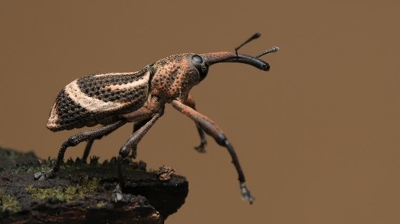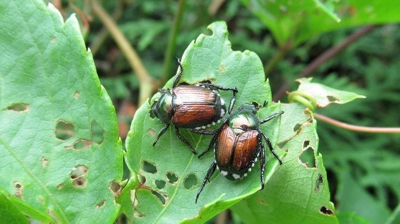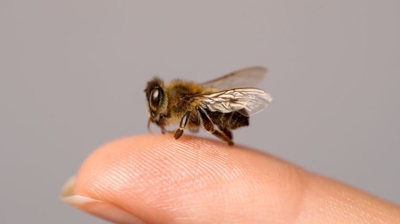
Centipedes
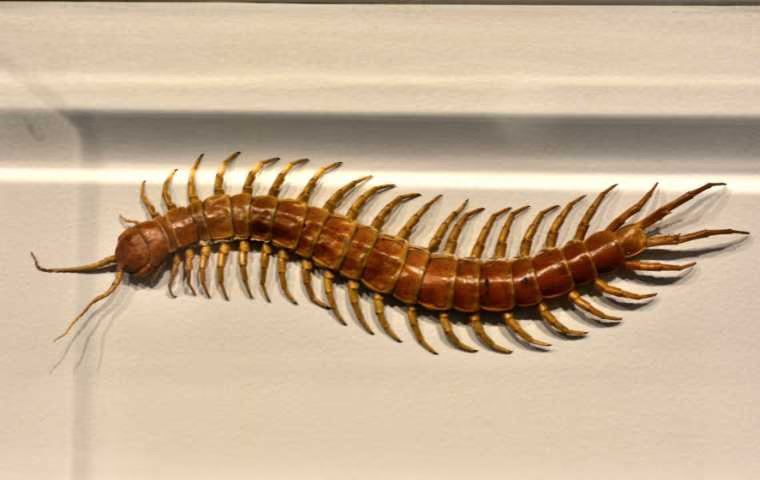
What Are Centipedes?
Centipedes are arthropods belonging to the class Chilopoda. They are elongated, segmented creatures known for their many legs, which is where their name is derived, as "centipede" means "100 legs." However, most centipedes do not have exactly 100 legs; their leg count varies depending on the species, ranging from as few as 15 pairs (30 legs) to over 100 pairs (200+ legs). These leg pairs are arranged along their body, with each segment typically having one pair of legs.
Centipedes are carnivorous predators and play a valuable role in ecosystems by helping to control insect populations. They have a pair of venomous fangs, called forcipules, located near their head, which they use to capture and immobilize their prey. Once immobilized, they inject venom to subdue their victims. While centipede venom is not typically dangerous to humans, it can cause localized pain and discomfort.
These arthropods are found in a variety of terrestrial habitats worldwide, from tropical rainforests to deserts. They are generally nocturnal and hide during the day in damp, dark places like leaf litter, logs, or soil crevices. Centipedes are characterized by their long, flattened bodies and segmented exoskeletons, which are often brightly colored or patterned. Their antennae and numerous legs give them a distinctive appearance.
Centipedes are fascinating creatures with a wide range of species, each adapted to its specific environment. They contribute to the balance of ecosystems by helping control insect populations and serve as intriguing subjects for entomologists and enthusiasts interested in the diversity of life on Earth.
Centipede Types
The United States is home to a variety of centipede species, representing different families and types. Here are some of the common types of centipedes found in the United States:
- House Centipede (Scutigera coleoptrata): House centipedes are one of the most commonly encountered centipede species in homes across the United States. They have long, slender bodies and distinctive long legs. House centipedes are beneficial as they feed on other household pests, but their appearance can be startling to some people.
While most centipedes in the United States are not dangerous to humans, some larger species, such as the giant desert centipede, can deliver painful bites, and individuals with allergies or sensitivities may experience more severe reactions. When encountering centipedes, especially venomous ones, it's advisable to exercise caution and avoid handling them.
Are Centipedes Harmful?
Centipedes are capable of biting, and some species have venomous fangs that they use to capture and immobilize their prey. However, centipedes are generally not aggressive toward humans and only bite in self-defense when they feel threatened or cornered. Here are some important details about centipede bites:
- Venomous Fangs: Centipedes have a pair of modified front legs called forcipules, which are equipped with venom glands and fangs. These forcipules are located near the head and are used to inject venom into their prey.
- Painful but Generally Not Dangerous: Centipede bites can be painful and cause localized discomfort. The severity of the bite depends on various factors, including the size and species of the centipede and the individual's sensitivity to the venom. In most cases, centipede bites are not considered medically significant, and the pain and symptoms typically subside within a few hours to a couple of days.
- Allergic Reactions: Some individuals may experience allergic reactions to centipede venom, which can result in more severe symptoms, such as swelling, redness, and prolonged pain. In rare cases, severe allergic reactions may require medical attention.
- Prevention: To avoid centipede bites, it's best to refrain from handling these creatures. If you encounter a centipede, it's advisable to use caution and not provoke or handle it. Wear gloves when gardening or working in areas where centipedes might be present to reduce the risk of accidental bites.
- First Aid: If bitten by a centipede, clean the wound with soap and water and apply a mild antiseptic to reduce the risk of infection. Over-the-counter pain relievers and cold compresses can help alleviate pain and swelling. If you experience an allergic reaction or severe symptoms, seek medical attention.
While centipede bites can be uncomfortable, they are not typically life-threatening, and fatalities from centipede bites are extremely rare. Most centipede species are more interested in hunting small invertebrates and do not view humans as prey. As such, centipede bites are usually a defensive response to perceived threats.
Learn more: Do Centipedes Bite?
Learn more: Are Centipedes Poisonous?
Centipede Appearance
Centipedes exhibit a distinctive appearance characterized by their elongated, flattened bodies and numerous legs. Here are some of their physical features:
- Body Shape: Centipedes have a long, segmented body that can range in length from a few millimeters to several inches, depending on the species. The body is typically flattened from top to bottom, allowing them to squeeze into narrow crevices.
- Segmentation: Their body is divided into numerous segments, with each segment having a pair of legs. The number of segments and legs can vary greatly among species, but it's essential to note that they do not have exactly 100 legs as their name might suggest.
- Legs: Centipedes are renowned for their many legs. These legs are typically thin and elongated, each ending in a claw-like structure. The number of leg pairs varies among species and can range from 15 pairs (30 legs) to over 100 pairs (200+ legs). The legs are arranged in a linear fashion along the sides of their bodies.
- Coloration: Centipedes come in a variety of colors and patterns, depending on the species. Some are brown or reddish-brown, while others may have striking coloration with contrasting bands or stripes. These colors often serve as camouflage in their respective habitats.
- Head: At the front of the centipede's body is the head, which is distinct from the body segments. The head features a pair of sensory antennae and a pair of venomous fangs called forcipules. These forcipules are used for capturing and immobilizing prey.
- Eyes: Centipedes typically have a pair of simple eyes or ocelli on their head, which can vary in number among different species. These eyes are often not well-developed, as centipedes rely more on their antennae for sensory perception.
- Antennae: They have a pair of long, thread-like antennae on their head, which are used for detecting their surroundings, including prey and potential threats.
- Exoskeleton: Centipedes have an exoskeleton made of chitin, which provides protection and support to their body. This exoskeleton may have a glossy or matte appearance, depending on the species.
- Size: Centipedes come in various sizes, with some species being relatively small, around a few centimeters in length, while others can grow larger, reaching lengths of several inches or more.
Centipedes' appearance can vary significantly from one species to another, and their adaptations often reflect their specific habitat and lifestyle. While their numerous legs and segmented bodies are distinctive characteristics, the coloration and other features can help in identifying different centipede species.
Learn more: What Do Centipedes Look Like?
Learn more: Centipedes vs Millipedes
Centipede Habitat
Centipedes can be found in a wide range of terrestrial habitats around the world. They are particularly diverse in tropical regions but can also be encountered in temperate and even arid environments. Here are some common places where you might find centipedes:
- Leaf Litter: Centipedes are often found beneath fallen leaves and other organic debris on the forest floor. Leaf litter provides them with a humid and sheltered environment where they can hunt for prey and hide from predators.
- Soil and Moist Soil: Many centipede species burrow into the soil or reside in moist soil, especially in gardens, agricultural fields, and woodland areas. They create burrows or tunnels in the ground and come out to hunt at night. .
- Logs and Rotting Wood: Centipedes are known to inhabit decaying logs and rotting wood. These materials provide a suitable habitat and a source of prey, such as insects and other arthropods.
- Rocky Habitats: Some centipede species prefer rocky environments, such as cliffs, rocky outcrops, or caves. These habitats offer protection and opportunities to find prey.
- Caves: Certain cave-dwelling centipede species have adapted to life in dark, underground environments. They are specially adapted to thrive in the challenging conditions of caves.
- Moist Areas: Centipedes are highly sensitive to desiccation (drying out), so they are often found in areas with high humidity. This includes damp basements, crawl spaces, and bathrooms in homes.
- Gardens and Yards: Centipedes can also be present in gardens, especially in areas with lush vegetation and organic matter. They may hide under pots, rocks, or mulch during the day.
- Tropical Rainforests: In tropical rainforests, centipedes are abundant on the forest floor and in the leaf litter. These environments provide them with a rich source of food and shelter.
- Deserts: While less common, some centipede species have adapted to desert environments. They are often found in burrows or beneath rocks, where conditions are cooler and more humid than the surrounding desert.
- Human Structures: Centipedes can occasionally find their way into homes, particularly if there are entry points such as cracks in walls or foundations. They may seek refuge in dark, damp areas like basements, bathrooms, or crawl spaces.
Centipedes are primarily nocturnal creatures, so you're more likely to encounter them at night. While centipedes are generally harmless to humans, some larger species may deliver a painful bite if handled, so it's advisable to observe them from a safe distance and avoid touching them.
Learn more: What You Ought To Know If You're Seeing Centipedes In Your Home
Learn more: Why Centipedes Invade Homes
Learn more: How Bad Is It To Have Centipedes In My Home?
Learn more: The Key To Keeping Centipedes Out Of Your Home
Learn more: What To Do About Centipedes In Your Home
Centipede Diet
Centipedes are carnivorous predators, and their diet primarily consists of other small invertebrates. They are highly efficient hunters, and their choice of prey depends on their size and the specific habitat they inhabit. Here's a detailed overview of what centipedes eat:
- Insects: Centipedes are voracious insect hunters. They often prey on a variety of insects, including ants, termites, beetles, roaches, crickets, and caterpillars. They use their quick speed and venomous fangs to capture and immobilize their prey.
- Arachnids: Centipedes will also feed on other arachnids, such as spiders, scorpions, and mites. They are well-equipped to overpower and consume these creatures due to their venomous fangs.
- Worms: Some centipede species will eat small earthworms and other segmented worms. They pierce the soft body of the worm with their fangs and inject venom to immobilize it.
- Slugs and Snails: In moist environments, centipedes may hunt and feed on slugs and snails. They use their speed and venom to capture and consume these slow-moving gastropods.
- Small Vertebrates: Larger centipede species, such as the giant centipede (Scolopendra gigantea), have been known to capture and consume small vertebrates like mice, birds, and reptiles. These larger centipedes have powerful venom and can subdue relatively large prey.
- Other Centipedes: Cannibalism is not uncommon among centipedes. Some species will cannibalize smaller or injured centipedes when suitable prey is scarce.
- Amphibians: In some cases, centipedes have been observed preying on small amphibians like frogs and toads. This behavior is more common among larger centipede species.
- Dead and Dying Organisms: Centipedes are opportunistic feeders and may scavenge on dead or dying organisms when live prey is scarce. They can help in the decomposition process by consuming carrion.
- Eggs and Larvae: Some centipedes may feed on the eggs and larvae of other arthropods, especially if they come across nests or breeding sites.
Centipedes are not herbivorous; they do not consume plant matter. They are adapted for a predatory lifestyle and play a crucial role in controlling populations of various invertebrates in their ecosystems. Their venomous fangs are primarily used to immobilize and subdue prey rather than being a direct threat to humans, although some larger centipede species can deliver painful bites if handled.
Learn more: What Do Centipedes Eat?
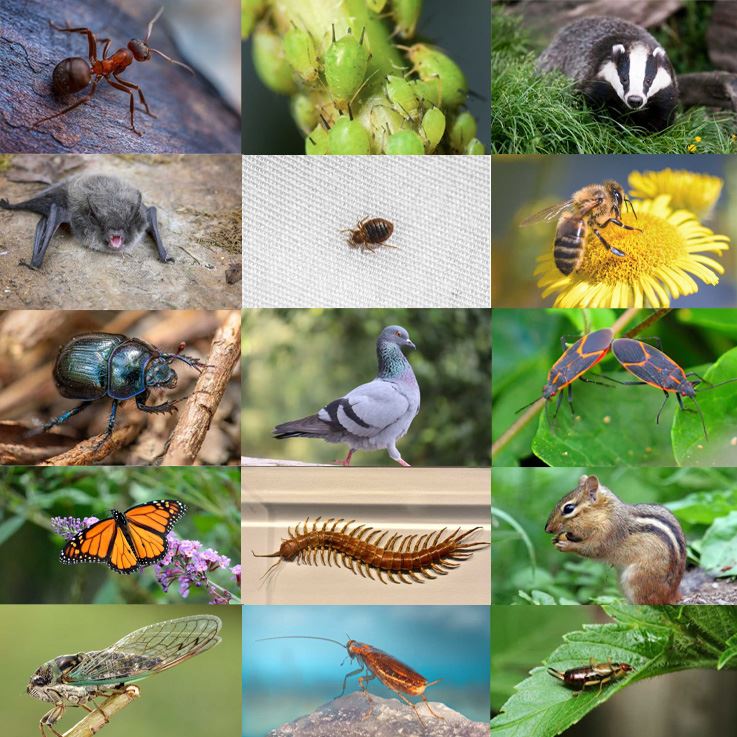
Centipede Life Cycle
The life cycle of centipedes is characterized by a series of stages, including egg-laying, hatching, and several juvenile stages before reaching adulthood. Centipedes are arthropods, and their life cycle is similar to that of other arthropods, such as insects and spiders. Here is a comprehensive overview of the life cycle of centipedes:
- Egg Stage: The life cycle of centipedes begins with the laying of eggs. Female centipedes typically lay their eggs in hidden, sheltered locations, such as underground burrows, crevices, or within organic matter like rotting wood or leaf litter. The exact number of eggs and the time it takes for them to hatch varies among species.
- Hatching: After a period of incubation, which can range from a few weeks to several months, depending on environmental conditions, the centipede eggs hatch. The emerging juvenile centipedes are known as "nymphs."
- Nymph Stage: Nymphs resemble miniature versions of adult centipedes but are smaller and lack the full complement of legs. They typically have only a few pairs of legs when they hatch, and they gradually develop more leg pairs as they molt and grow.
- Molting: Like other arthropods, centipedes grow by molting, shedding their exoskeleton to accommodate their increasing size. During each molt, the nymphs gain additional leg pairs and body segments until they reach maturity. The number of molts varies among species, but it is usually between 5 and 12 molts before reaching adulthood.
- Juvenile Development: As centipedes continue to molt and grow, they become increasingly similar in appearance to adult centipedes. The number of leg pairs and body segments increases with each molt, and they develop their characteristic venomous fangs.
- Adulthood: Once centipedes reach maturity, they have their full complement of body segments and leg pairs. Depending on the species, they can have anywhere from 15 to over 100 leg pairs. At this stage, they are capable of reproduction.
- Reproduction: Adult centipedes reproduce by mating. Males and females locate each other through pheromone signals or other sensory cues. After mating, females lay eggs in suitable locations, and the life cycle begins anew.
- Lifespan: The lifespan of centipedes varies among species, but most centipedes live for several years. Some larger species can live for up to a decade or more under the right conditions.
Centipedes are solitary creatures and do not exhibit parental care. Once the eggs are laid and the nymphs hatch, they are on their own and must fend for themselves. Their success in finding food and suitable shelter is crucial for their survival and development through the various life stages.

Hear From Our Happy Customers
-
"Exceeds Expectations"
I can’t say enough positive things about this company... The tech that came out, Jarvis went above and beyond my expectations. Thank you guys, I will continue using your services.
- Jake M. -
"Fantastic & Patient"
Jarvis was fantastic and patient. He answered my questions with an in-depth explanation and addressed all of my areas of concern. Would love for him to be my assigned tech going forward. Well done!
- Yonnette M. -
"Very Knowledgeable"
The tech that arrived was courteous, professional, and very knowledgeable. He was Great.
- Uerial I. -
"Great Communication"
Tech was on time, communication was great, and he accommodated my needs.
- Alonzo W. -
"Professional & Considerate"
I’m pleased with Miche services. Jarvis came today. Professional and considerate. Thank you!
- Judy B. -
"Wonderful Service"
Wonderful service. Jarvis is great. Took care of everything I needed. Thank you!
- Henry P.

